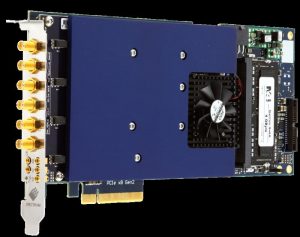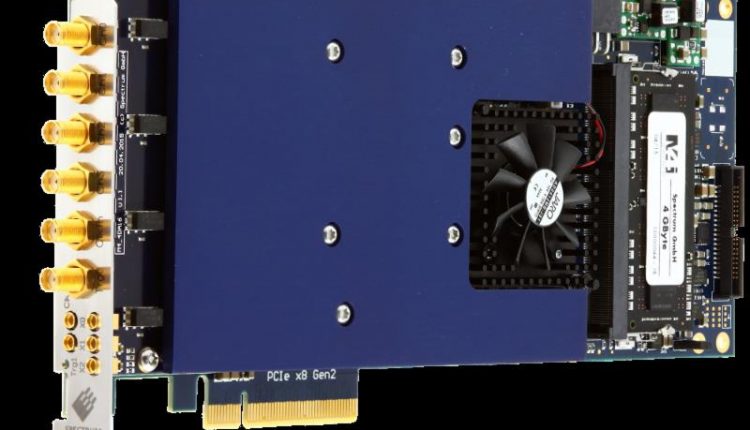High-precision Spectrum 625 MS/s 16-Bit AWGs
Spectrum has announced the release of three new M4i series Arbitrary Waveform Generators (AWGs) that set new standards in speed and precision. The new models of the M4i.66xx series offer one, two and four channels with each channel capable of outputting electronic signals at rates of up to 625 Megasamples/second (MS/s) with 16 bit vertical resolution. The combination makes these new AWG’s ideal for generating high frequency signals up to 200 MHz with the best possible accuracy and fidelity.
 The frequency range and dynamic performance of these AWG’s makes them of interest to engineers and scientists working in areas such as communications, radio, radar, semiconductors, nano-technology, media testing, automation, ultrasound, optics, medical and biological science.
The frequency range and dynamic performance of these AWG’s makes them of interest to engineers and scientists working in areas such as communications, radio, radar, semiconductors, nano-technology, media testing, automation, ultrasound, optics, medical and biological science.
Based on Spectrum’s proven M4i series PCI Express (PCIe) platform the products are much smaller than conventional instruments and can be used in most modern PC’s. Simply install the AWG cards into a vacant PCIe x8 or x16 slot, install the driver, load Spectrum’s software and start generating waveforms. The AWG’s are fully programmable and work with Spectrum’s own SBench 6 control software as well as third party software tools such as LabVIEW, LabWindows and MATLAB.
To allow the generation of long and complex waveforms, the AWGs include a generous 2 GSamples of on-board memory and a number of operating modes such as Single-Shot, Loop, FIFO, Gating and Sequence Replay. The Sequence Replay mode allows to store different waveform segments in memory and concat and loop them in a sequence. Furthermore users can switch between stored waveforms by software command or overload waveforms in run-time.
In FIFO mode, the cards use an ultra-fast PCIe x8 Gen2 interface to stream data continuously from the PC memory to the AWG at speeds in excess of 1.5 GB/s. If two or four channels are used, the outputs are fully synchronized and share a common clock to ensure minimal phase error. If more channels are needed then up to 8 cards can be connected together with Spectrum’s Star-Hub clock and trigger system. Star-Hub enables instruments with up to 32 fully synchronous channels to be created.
Designed to output signals that simulate those found in the real world, the AWGs deliver programmable output levels from ±200 mV to ±5 V into high-impedance (resulting in ±100 mV up to ±2.5 V into 50 Ω termination). Using 16 bit digital to analog conversion the AWGs also allow fine signal details to be generated. They deliver outstanding dynamic performance both in signal-to-noise (SNR) and spurious free dynamic range (SFDR).
In addition, each channel is clocked using a precision phase locked loop (PLL) control system that can be generated internally or from an external clock or reference. The AWG’s flexibility is further enhanced by front-panel multipurpose I/O connectors that allow access to asynchronous and synchronous digital outputs (marker outputs), asynchronous digital inputs, the trigger output, the run and arm status and the D/A sample clock.
Customers who want to control the AWGs with their own software can use the proven Spectrum drivers (available for Windows and Linux) that are included as part of the product. The driver interface of the new M4i.66xx series is 100% compatible to the older and slower M2i.60xx AWG series. A set of standard programming examples illustrates the main signal generation functions and support is provided for Visual C++, Borland C++, Gnu C++, LabVIEW, Visual Basic, VB.NET, C#, J#, Python and Delphi code.

